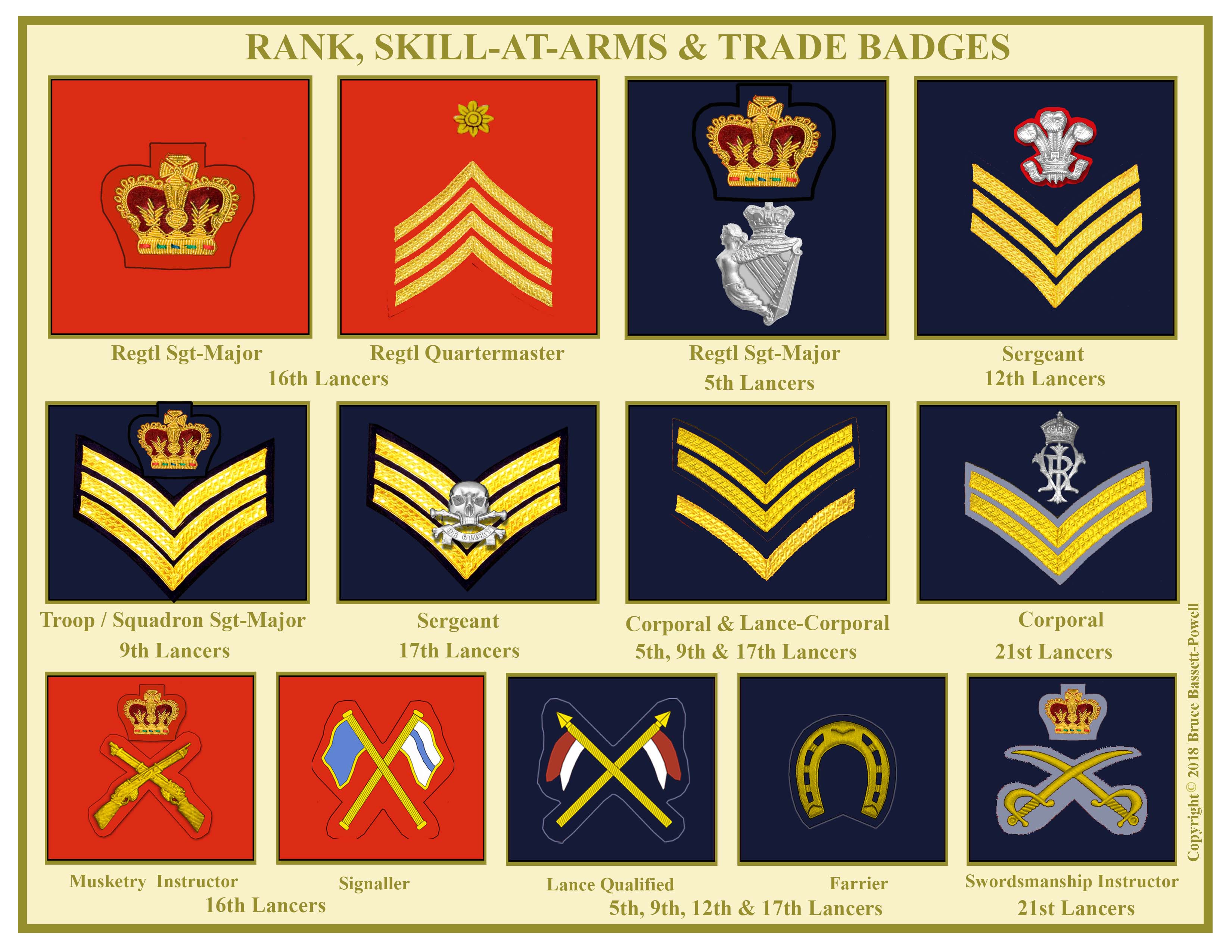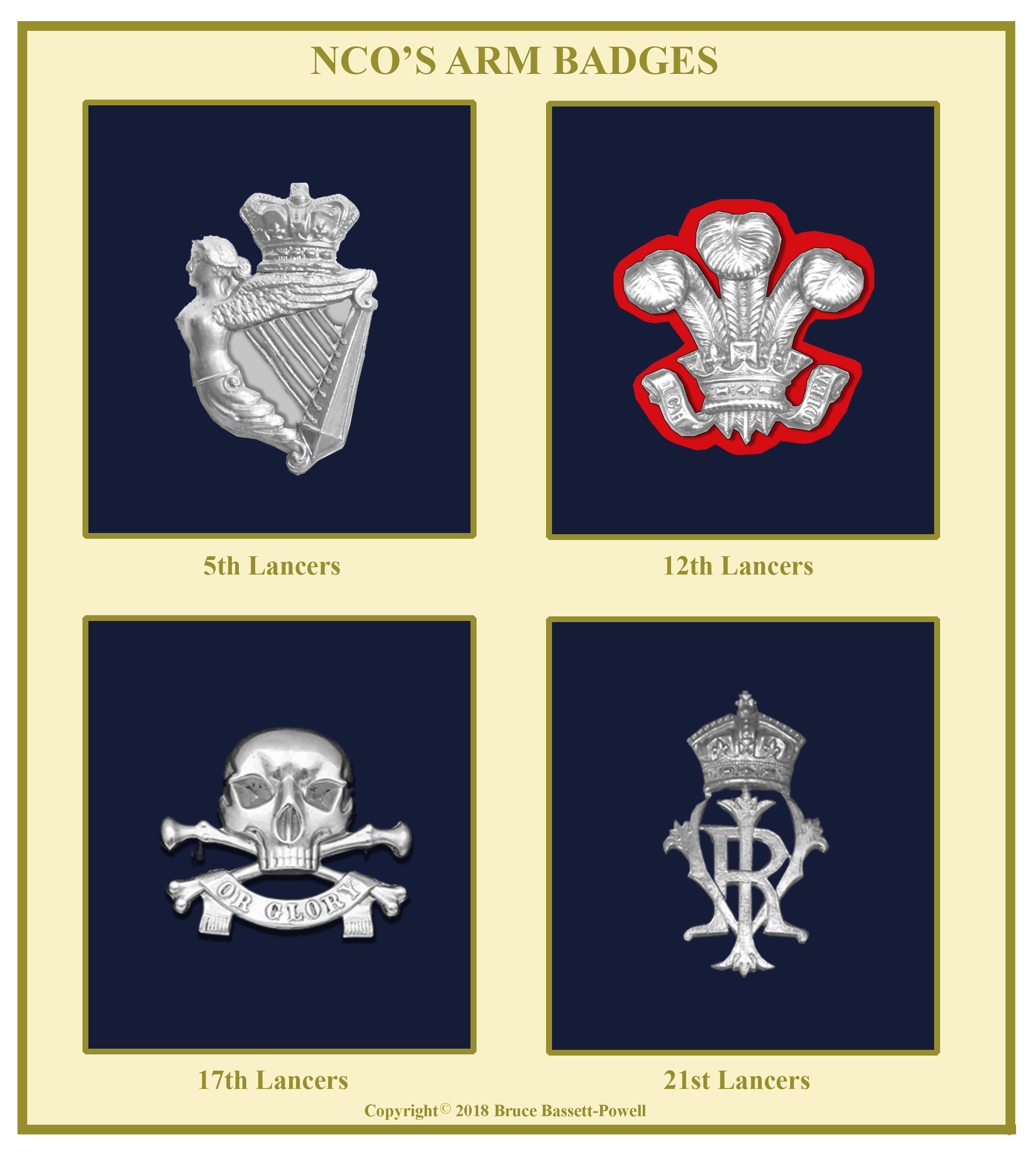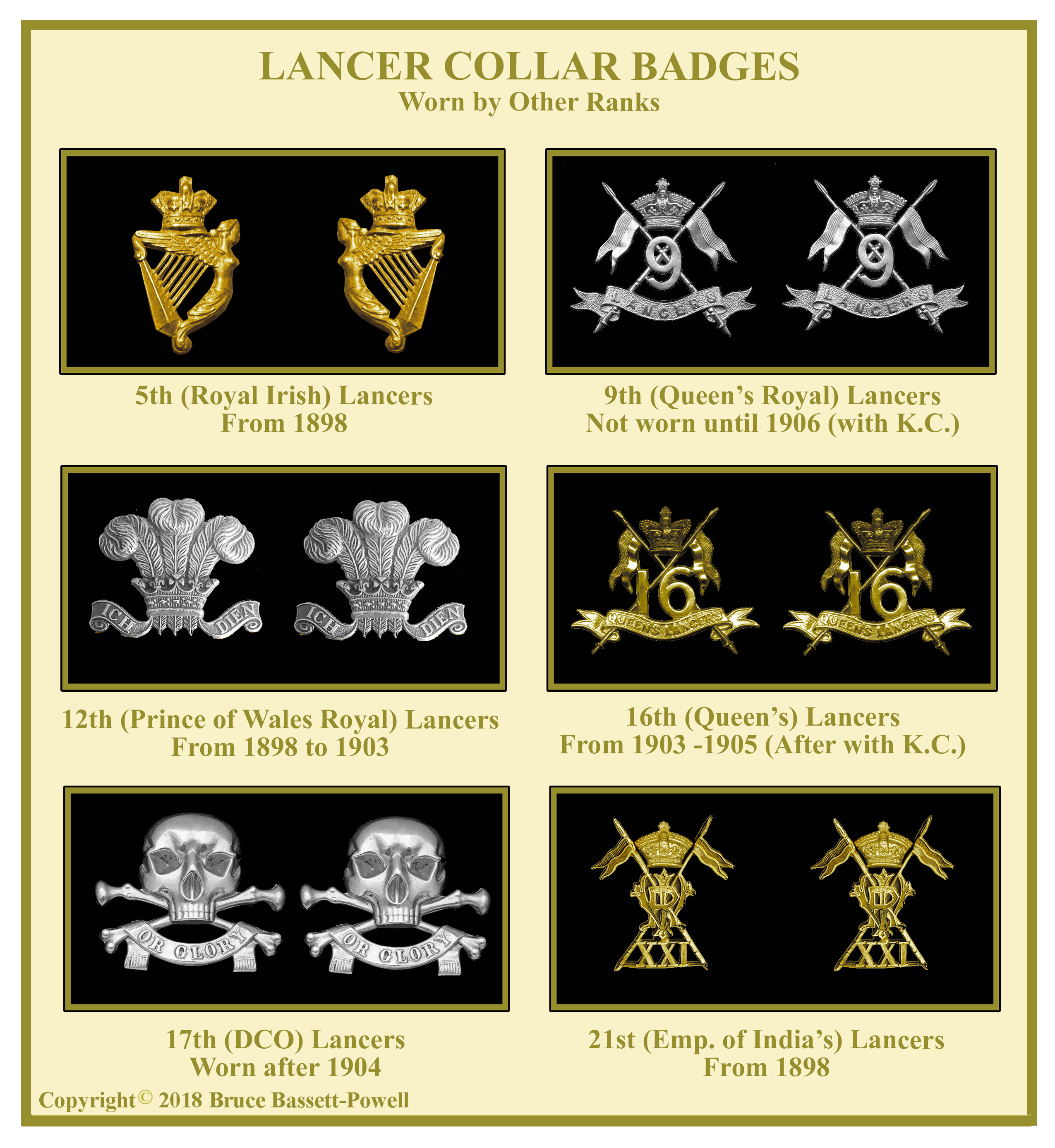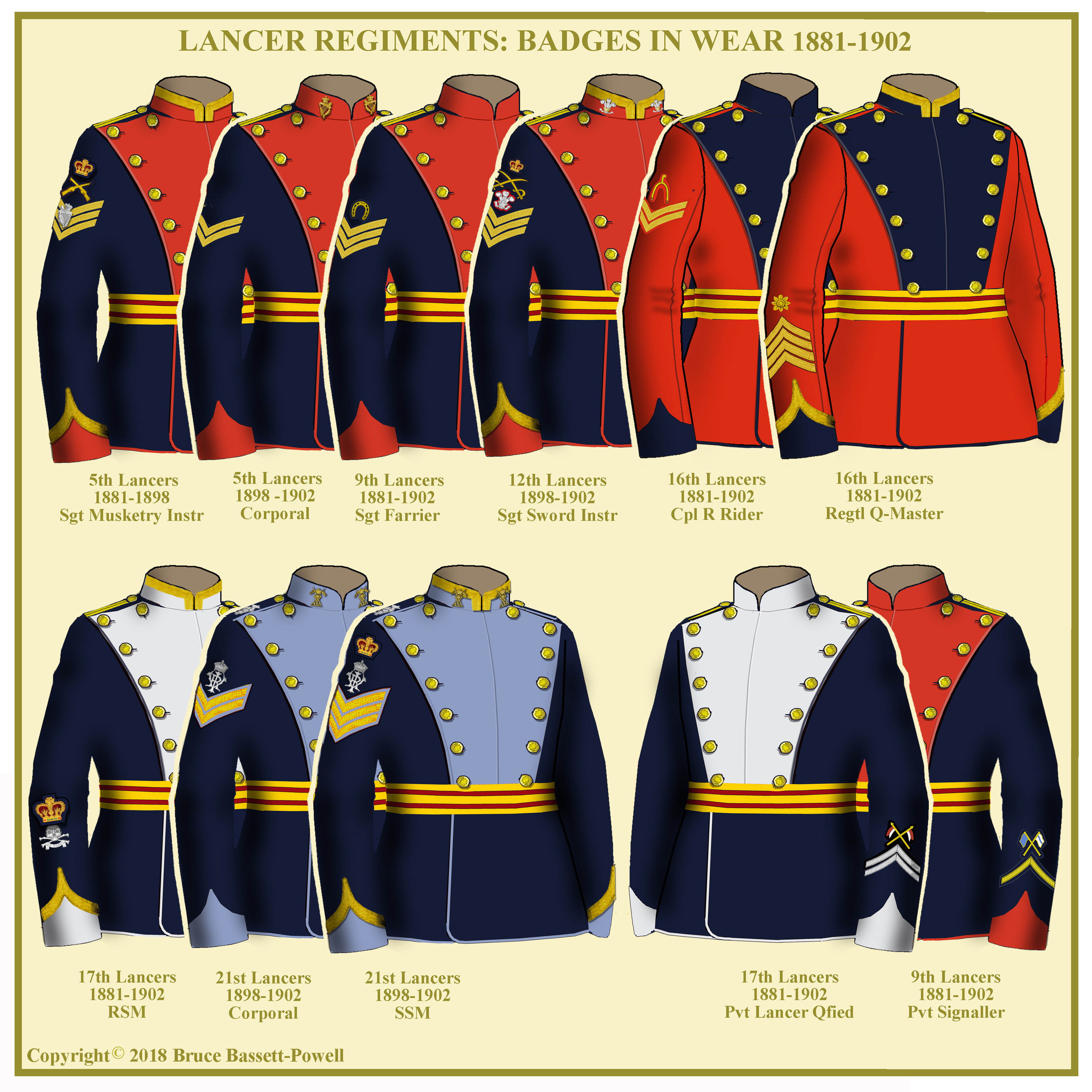UNIFORMS, ARMS & EQUIPMENT - LANCERS
UNIFORM BADGES WORN BY OTHER RANKS
The previous series on the Heavy Cavalry and Hussars concerning the 1881 reforms that affected the nomenclature of other ranks are repeated here for clarification. The main divisions were Warrant Officers, Staff-Sergeants 1st Class, Staff-Sergeants 2nd Class, Sergeants, corporals and Privates. Late in 1881, Regimental Sergeant-Majors, Bandmasters, and senior specialist ranks (Farriers, Quartermasters etc) were raised to Warrant status.
BADGES OF RANK
Apart from the uniform distinctions described in the previous section the rank badges and chevrons were to be worn on the right arm only. All chevrons, points down were to be worn above the elbow and badges for Regimental Sergeant-Majors and chevrons points up worn below the elbow. Only specialist ranks as described above wore four chevrons points up along with a badge of specialty above. These were the only points up chevrons worn on the right arm.
Like their brothers in the heavy cavalry and hussars, lancers chevrons were of gold lace. Unlike the blue coated hussars, no lancer regiments appear to have had backings of facing colour on their chevrons and badges. The 21st Lancers did adopt French grey backings upon their conversion from hussars.
BADGES OF TRADE & SKILL-AT-ARMS
These badges have been extensively described in the Heavy Cavalry and Hussar sections and only a selection are shown here. The worsted yellow long service chevrons worn on the left forearm were white worsted in the 17th Lancers.
REGIMENTAL ARM BADGES FOR NCOs
Only three regiments wore sergeants or NCO arm badges before 1898. When the 21st Lancers were formed, they adopted an arm badge within two years.
5th Lancers – The regiment adopted an embroidered Harp as an arm badge when re-formed as lancers in 1858. Authorisation for its wear came from Horse Guards in 1860 and was to be worn by all NCOs above corporal. The embroidered Harp was replaced by a silver one surmounted by a Crown, identical to that of the 8th Hussars, in 1867. It was worn on the chevrons by all ranks above corporal without backing. It was above the chevrons by some W/Os and SSMs on certain undress uniforms (See next section)
12th Lancers – The Prince of Wales’s Feathers had been worn unofficially, as an embroidered arm badge up until 1834. After the Crimean War, photographic evidence shows certain NCO’s wearing it in 1860. The silver badge was authorised in 1867 and was worn above the chevrons (and below the crown) by all ranks above corporals. Corporals were wearing it after 1873 and lance-corporals by 1891. Much evidence shows that the badge had a scarlet backing. The embroidered badge was worn on most undress uniforms until the mid-1890s (see next section).
17th Lancers – There is much dubious anecdotal evidence to suggest that the “Motto” was worn by NCOs before and during the Crimean War. This is mostly considered as unlikely. Approval for the silver Mottos was made in 1863 and was to be worn by all ranks above corporal. In late 1900 corporals were allowed to wear it but lance-corporals never did. The Motto was always worn to cover the top two chevrons, whether points down or points up.
21st Lancers – After a refusal from the Army Council in early 1899, approval for the 21st to wear an arm badge came later that year. It was to be a silver VRI cypher surmounted by an Imperial Crown. The badges probably did not come into wear until 1900.
The 9th Lancers finally adopted an arm badge for NCOs in 1903 (outside the scope of this study) which was Queen Adelaide’s cypher reversed and intertwined. The 16th Lancers never wore an arm badge until amalgamation with the 5th Lancers in 1922 when the Crown and Harp was adopted.
COLLAR BADGES
Although collar badges for other ranks were generally approved from 1898, not all regiments wore them immediately. Within the lancer arm, only the 5th, 12th and 21st regiments wore them before 1902. A wealth of photographic evidence suggests that the 9th, 16th and 17th adopted them between 1903 and 1908, the former two with King’s Crowns. The 12th Lancers changed their badge to include crossed lances in 1903.






